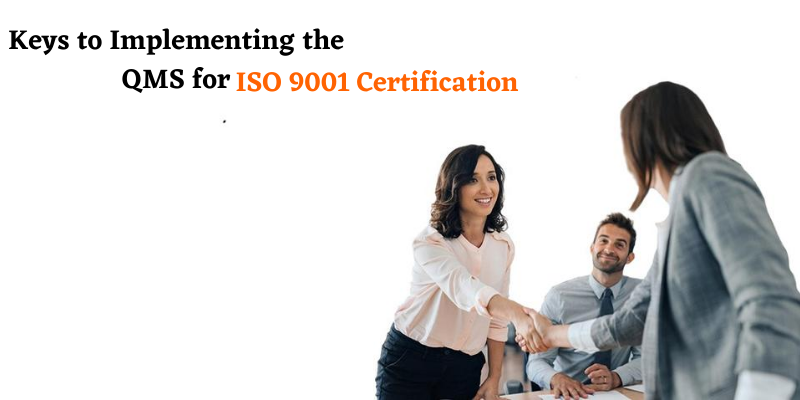
There are many reasons to implement an ISO 9001 certified quality management system or QMS in your business, but improving the quality of your products or services to increase customer satisfaction is the biggest one. The other reasons behind getting ISO 9001 certification may be streamlining the processes, strengthening the relationship with partners and distributors, or gaining more business opportunities in local or international markets. The list goes on, but what is more important is the ISO standard that offers a myriad of benefits, and obviously, many businesses want to get certified.
If you are thinking about how to make your QMS implementation effective enough to get your business certified, here is the answer. Implementing a coherent and uniform QMS that will take care of every process in the business is challenging, but this blog explains the key steps to do it. It explains why you should not rush through the process and follow a gradual systematic approach to properly implement a QMS that can cater to all ISO 9001 requirements. Here you go.
Promote a Strong Quality Policy
This is the first step to implementing a QMS. You need a strong policy with all your quality objectives properly specified so that the QMS structure can be planned accordingly. When it comes to formulating the quality policy, the top management of the organisation should take responsibility. They should establish a committed team with skilled quality management representatives who will evaluate every business process, products/services, and customer preferences to determine the desired quality objectives. They will also need to communicate the objectives through a well-defined statement to the stakeholders.
Employees Cooperation
The cooperation and participation of the employees are essential to introduce a strong quality culture and consecutively implement the QMS. Without their commitment, it is impossible to integrate the QMS at the core of the organization and spread awareness about quality.
Moreover, when a QMS is carefully implemented by covering every process of the business and involving its employees, it is likely to ensure proper quality assessment, remove any wasteful practices, and curb quality risks
Conduct the Gap Analysis
Gap analysis is an effective practice that will help you understand the key improvements needed over your existing quality management approach. Plain and simple, it will let you identify the requirements of ISO 9001. Check each of your processes and quality measures to learn the weaknesses and then decide the scope for your ISO 9001 certification.
Effective Documentation of the QMS
The success of the QMS implementation depends on its documentation, which is a manual that specifies the procedures or standard practices for quality assurance. It is clear that people in the organisation will be serious about QMS implementation and will execute it properly when they are presented with a template that covers everything. Moreover, documentation saves time and prevents the quality management representative from confusion about the format or features of the QMS. It gives them a solid foundation for operating the QMS.
Employee Training to Implement QMS
After the documentation is done, you need the quality management team to implement it. Sometimes an in-house quality management team has little or no understanding of the ISO 9001 standard and how to turn the QMS into an ISO compliance management system. You need to give them the training to make them understand the new QMS requirements, documentation, and their role in transitioning the QMS. It requires the full-fledged commitment of the management team and quality representatives to deploy the QMS.
Monitoring the QMS Performance
The QMS needs to be consistently checked and improved to ensure it is competent and can meet the ISO 9001 certification requirements. You need to monitor the functioning of the QMS and to ensure it improves the processes and quality of the products or services. Closely monitoring the QMS will also help in identifying any inconsistencies or inefficiencies that may make your business ineligible for ISO 9001.
Key Takeaway!
The implementation of the QMS is also the road to successful ISO 9001 certification, and it is a challenging and intense process. It is intense because you need the commitment and cooperation of every member of your organisation, including the top management personnel and the quality assurance representatives to integrate a coherent QMS. For years, the quality management certification has proved to be the game-changer for businesses of all types, benefitting them with process efficiency, higher customer satisfaction, increased opportunities, and so forth. If you have still not got your business ISO certified, you are missing out on a lot! If planning and implementing the QMS is a real challenge for you, get assistance from ISO compliance consultants. They will help you come up with a suitable QMS for your business and get ISO 9001 certified by adhering to the above keys to implementation.
At Compliancehelp, we are heavily experienced with ISO 9001 certification, and can provide you with quality assurance services that will ensure a smooth QMS implementation! Our consultants will tell you how to work on the quality manual and QMS implementation with the participation of the management and employees. To get our assistance, feel free to contact us.
Liked the blog? Keep following our blog section for more updates and informative articles on ISO certification and compliance.

Get connected with us on social networks!